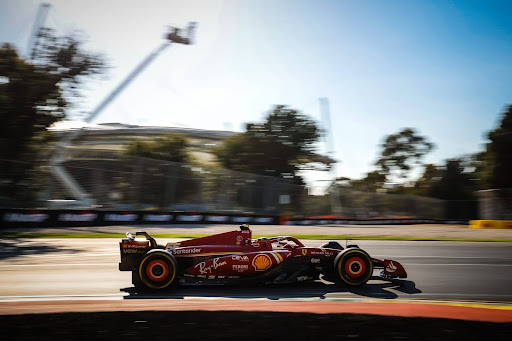Formula 1, often referred to as the pinnacle of motorsport, is not just about high-speed races and glamorous circuits. It has long been a testing ground for innovation and technological advancements that eventually trickle down to the road cars we drive daily. The influence of F1 on road car technology is profound and multifaceted, ranging from safety features to performance enhancements. Let’s delve deeper into how F1 has shaped the road cars we know today.
Advanced Materials and Aerodynamics
Carbon Fibre Revolution
One of the most significant contributions of F1 to road cars is the use of advanced materials such as carbon fibre. Initially developed for lightweight and robust F1 cars, carbon fibre is now commonly used in high-performance and luxury road cars for its strength and weight-saving benefits. This material has revolutionised car manufacturing, allowing for lighter, more fuel-efficient vehicles without compromising on safety or performance.
Aerodynamic Mastery
In the realm of aerodynamics, F1 teams spend countless hours in wind tunnels perfecting the airflow over the car’s body to reduce drag and increase downforce. These aerodynamic principles have trickled down to road cars, enhancing their fuel efficiency and stability. Features like rear diffusers, spoilers, and underbody aerodynamics in road cars owe their existence to F1 innovations.
Engine Efficiency and Hybrid Technology
Pioneering Engine Performance
F1 has always pushed the limits of engine performance and efficiency. The hybrid power units used in modern F1 cars are marvels of engineering, combining internal combustion engines with electric motors to maximise performance while minimising fuel consumption. This technology has directly influenced the development of hybrid and electric road cars, making them more efficient and environmentally friendly.
KERS and ERS
Technologies such as the Kinetic Energy Recovery System (KERS) and the Energy Recovery System (ERS) were initially developed for F1 cars to boost performance by recovering energy that would otherwise be lost. These systems have now found their way into road cars, improving fuel efficiency and providing additional power boosts when needed.
Safety Innovations
Life-Saving Technologies
Safety is paramount in F1, and many innovations developed for the sport have found their way into road cars. The HANS (Head and Neck Support) device, introduced to protect drivers from severe head and neck injuries, is now a standard safety feature in many forms of motorsport and has influenced road car safety systems. Additionally, the development of advanced crash structures and materials in F1 has led to safer road cars that better protect occupants in the event of an accident.
Halo Device
The introduction of the Halo device in F1, designed to protect drivers’ heads from flying debris and impacts, has set a new standard for driver safety. While the exact device hasn’t been implemented in road cars, the concept has led to increased research and development in protective structures for everyday vehicles.
Braking Systems and Tire Technology
Superior Braking Performance
The high-performance braking systems used in F1, including carbon-ceramic brakes, have been adapted for use in high-end sports cars, providing superior stopping power and durability. These brakes not only enhance performance but also significantly improve safety by offering better heat resistance and longevity.
Tyre Advancements
Tyre technology developed for the extreme conditions of F1 racing has also improved the performance and safety of road car tires. Innovations such as multi-compound tyres and advanced tread patterns offer better grip, longevity, and fuel efficiency, making everyday driving safer and more enjoyable.
Data and Telemetry
Real-Time Monitoring
F1 teams rely heavily on data and telemetry to monitor and optimise car performance. This technology has been adapted for road cars, allowing manufacturers and drivers to monitor various aspects of vehicle performance in real time. Advanced driver-assistance systems (ADAS) and predictive maintenance technologies are direct beneficiaries of F1’s data-driven approach.
Connected Cars
The concept of connected cars, which can communicate with each other and with infrastructure to improve safety and efficiency, has its roots in F1 telemetry systems. These systems help in traffic management, collision avoidance, and providing real-time updates to drivers.
Conclusion
Formula 1’s relentless pursuit of excellence and innovation has a lasting impact on the automotive industry. The technologies and advancements developed for F1 cars not only enhance the performance and safety of road cars but also contribute to a more sustainable and efficient future for the automotive world. As F1 continues to evolve, we can expect even more groundbreaking innovations to make their way from the racetrack to the road.
The influence of F1 on road car technology is a testament to the sport’s role as a crucible of innovation. From advanced materials and aerodynamic designs to cutting-edge engine technology and safety features, the advancements driven by F1 are making our road cars faster, safer, and more efficient. As we look to the future, the symbiotic relationship between F1 and road cars will undoubtedly continue to thrive, driving progress and pushing the boundaries of what’s possible in automotive engineering.
Written by Gareth Booth


Leave a Reply